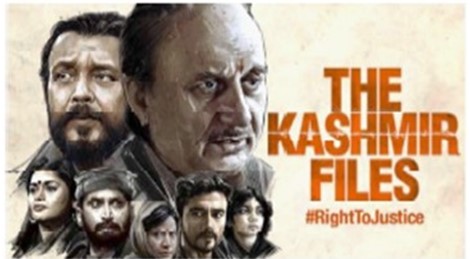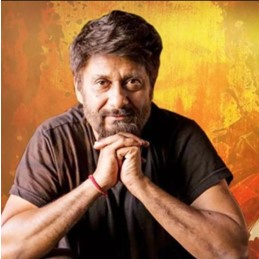By Bupesh Kaul, Squirrel Hill, PA
Bupesh Kaul, a resident in our area for over twenty-five years, is a practicing physician, now in semi-retirement. He was an associate professor at the University of Pittsburgh School of Medicine. This is his review of Vivek Agnihotri’s acclaimed film The Kashmir Files.
The release of the movie, The Kashmir Files, has led to a renewed interest in the happenings in the verdant vale of Kashmir over three decades ago. The history of Kashmir is very tangled and complex — as all history usually is.
In the Indian context, Kashmir was an important center for learning — arts, literature, religion, and spiritual quest -— a place where Adi Shankaracharya preached as he revived Hinduism during his travels in the eighth century, CE.
The advent of Islam in the valley in the 14th century, though initially comparatively peaceful, became particularly brutal for the Kashmiri Hindus (Kashmiri Pandits) resulting in mass conversion to Islam, not always by persuasion. At one point, only a small number of Hindu families were left in the valley. Following the Anglo-Sikh war in mid-19th century, Kashmir, which was a part of the Sikh Empire and was mostly Muslim, was “sold” to the Raja of Jammu by the British for a princely sum of 75 lakh Nanakshahi Rupees. The State became Jammu & Kashmir (J&K).
In August 1947, J&K had four distinct regional ethnicities. The Kashmir Valley (Kashmiri), Jammu (Dogri), Ladakh (Ladakhis) & the Northern territories (Gilgit and Baltistan). The Valley had a Hindu minority, about 2-3% of the population. The Kashmiri language was spoken only in the Valley.
It is beyond the remit of this article to trace or debate the political machinations, calculations, and intrigue from 1947 to 1990 that led to the exodus of the minority Kashmiri Pandit community from the Valley in 1990. But what is indisputable is that a premeditated, calculated effort was made to rid the Valley of its Hindu natives. Long before the term “ethnic cleansing” gained currency in the West, it was a reality for the minority Hindu community in the Kashmir Valley. A targeted and carefully orchestrated campaign resulted in a premeditated brutal murder of scores of Pandits that led to the mass exodus of the minority Hindu population from the Valley.
The film also brings into sharp focus the inability/unwillingness of the Indian state and its media to recognize this issue as an Indian issue instead of seeing it as a Kashmir issue. The film does not portray the planning, coordination, and orchestration of the attacks by India’s immediate neighbors. Excepting for this and other minor quibbles, the movie graphically captures what should only be called genocide by terrorism, leading to the exodus of almost all Kashmiri Pandits from the Valley.
Watching the movie at the Waterfront Multiplex, I and other members of the Pandit community had a cathartic release, with many in the audience sobbing through the screening. The makers of The Kashmir Files do not shy away from making bold statements and that is the strength of the movie.
The director, Vivek Agnihotri gives voice to alternate viewpoints for which he needs to be commended. The Pandit community hopes this film will initiate a dialog to bring out the deafening silence by both the media and a spate of weak, corrupt politicians and officials who conspired, perhaps unwittingly, to condemn the whole Pandit community to become refugees in their own land. And bring to justice the perpetrators of the murder, loot, rape, and pillage perpetrated on a peaceful community.
The Pandits believe in the idea of India and in law and order, and not in vigilante justice. Which is why not one Kashmiri Pandit picked up a gun to avenge the murderous wrongs perpetrated on the community. ∎



